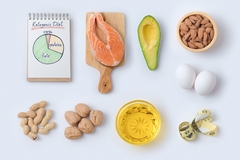High Amylose Maize Blood Sugar Level Claim Confirmed, Digestive Health Claim Not Accepted by EFSA
Scott, National Starch: “We are disappointed that the claim for digestive health was not accepted based on the claim wording. At the time of submission, there was a lack of clarity surrounding EFSA expectations for Article 13.1 claims."

4/19/2011 --- On Friday April 8, the European Food Safety Authority (EFSA) issued a positive opinion substantiating the health claim describing the benefits of consuming type-2 resistant starch from high amylose maize (Hi-maize) in relation to healthy blood sugar levels. A second claim for digestive health benefits was not accepted because the EFSA panel considered the wording of the claimed effect was not sufficiently precise. National Starch Food Innovation submitted these two health claims in September 2007 in accordance with Article 13.1 of Regulation (EC) 1924/2006 on Nutrition & Health Claims. EFSA’s opinion will now need to be adopted by the European Commission via a Community list of authorised claims due to be published later this year.
Julie Scott, regulatory manager, EMEA, National Starch Food Innovation, comments: “We are delighted with the positive outcome of the EFSA opinion. It reinforces our commitment to generating meaningful scientific data that support claims for the natural resistant starch from high amylose maize found in Hi-maize. It is a significant achievement given the high volume of claims that have been rejected by EFSA.
“Notably, EFSA’s conclusion highlights the significance of Hi-maize resistant starch as an important source of dietary fibre with substantiated health benefits and confirms its role as a key nutritional component of a healthy balanced diet. Following the rigorous assessment and successful first stage approval, we are confident that the Commission will adopt EFSA’s opinion.
“It is also noteworthy to mention that the EFSA opinion was based on clinical data submitted for natural resistant starch made from high-amylose maize.
“We are disappointed that the claim for digestive health was not accepted based on the claim wording. At the time of submission, there was a lack of clarity surrounding EFSA expectations for Article 13.1 claims. It is only since EFSA has held stakeholder meetings and issued their opinions that industry has learned more of these expectations. We are confident in the strength of our clinical data, and we will build on the knowledge we have learned through the process to work through the appropriate channels to revisit the wording.”
Pauline Taggart, business manager, nutrition, National Starch Food Innovation, Europe, adds: “The EFSA result is great news for resistant starch and those manufacturers using Hi-maize. The approved claim will be instrumental in helping food manufacturers highlight the benefits of their products containing natural resistant starch and provide consumers with a convenient way to increase their intake of this fibre-rich ingredient in their everyday favourite foods. We will work with our European customers to help them produce and promote differentiated foods with claims focused on the quality and type of carbohydrate in controlling blood glucose levels after a meal; high fibre and products targeted specifically at consumers concerned about diabetes and healthy blood sugar.
As provided for in the EFSA opinion, “14% of the starch in the flour in high-carbohydrate foods must be replaced by resistant starch” to be considered as adequate for a positive impact on health. Hi-maize is a natural source of fibre made from proprietary high amylose maize. It is rich in a unique dietary fibre known as resistant starch. This nutrient is called ‘resistant’ as it resists digestion in the small intestine and passes into the large intestine where it is fermented by bacteria in the colon. Unlike other fibres, Hi-maize does not impact the taste, texture or appearance of foods. It is used by simply replacing flour in products such as bread, baked goods, pasta, cereals and cereal bars.
Some foods are naturally rich in resistant starch: unprocessed whole grains, under-ripe bananas, beans and legumes. Other foods naturally contain low levels of resistant starch: cooked and cooled potatoes, rice and pasta. The only commercially available natural source of resistant starch from high-amylose maize for formulating in bread, bakery, cereal and pasta is Hi-maize resistant starch. Dietary fibres (eg insoluble, soluble fibre and resistant starch) are not interchangeable and it important that fibre comes from a range of sources to ensure maximum benefits from fibre in the diet.
















